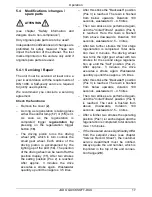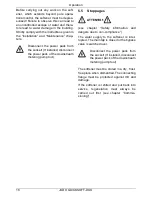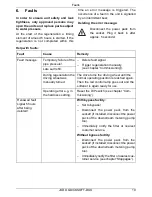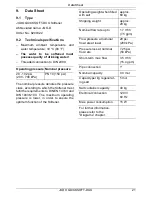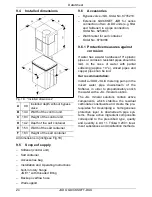
JUDO QUICKSOFT-DUO
9
Installation
4.1.2 Installed position
ATTENTION
(see chapter “Safety information and
dangers due to non-compliance”)
Always install the softener in a vertical
position (± 5°)!
Failure to observe this can impair its function.
4.1.3 Power supply
ATTENTION
(see chapter “Safety information and
dangers due to non-compliance”)
A permanent power supply must be avail-
able. If the softener is not permanently
supplied with electricity
–
No regeneration takes place.
–
No alarm is given in case of faults.
–
Water losses or even water damage can
occur if the power supply is interrupted
during regeneration.
4.1.4 Mounting the built-in rotary
flange
The built-in rotary flange is used as a
connecting element between the pipe and
the softener.
It is suitable for both horizontal and vertical
pipes.
The installation height depends on the pipe
layout. The minimum installation height from
the floor to the rotary flange is 15 inches.
The built-in rotary flange must be
installed in the direction of flow. This is
marked by a cast in arrow (see Fig. 5).
Failure to comply with this means the
softener cannot work.
ATTENTION
(see chapter “Safety information and
dangers due to non-compliance”)
The flange surface of the built-in rotary
flange must be in a vertical position! The
built-in rotary flange must be fitted so that
mechanical stresses cannot occur! Other-
wise mechanical damage can result in the
built-in rotary flange. This can result in major
water damage.
In this case, people close to the softener are
exposed to a health risk due to the large
quantities of water.
Therefore, during installation, ensure that no
large forces act on the pipe, built-in rotary
flange and softener.
A splash proof socket is required
for the power pack, in accordance
with the legal regulations for wet
rooms.
Fig. 5:
Built-in rotary flange

















